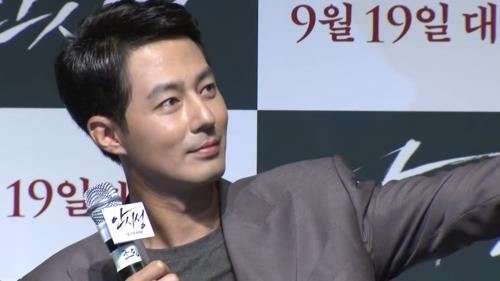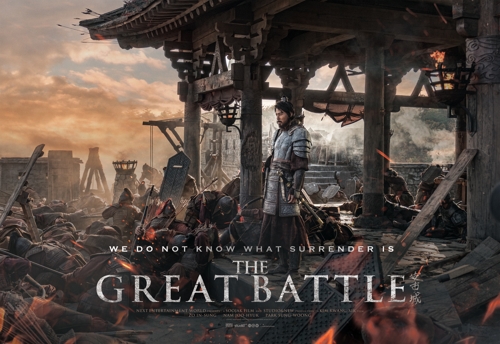- California Assembly OKs highest minimum wage in nation
- S. Korea unveils first graphic cigarette warnings
- US joins with South Korea, Japan in bid to deter North Korea
- LPGA golfer Chun In-gee finally back in action
- S. Korea won’t be top seed in final World Cup qualification round
- US men’s soccer misses 2nd straight Olympics
- US back on track in qualifying with 4-0 win over Guatemala
- High-intensity workout injuries spawn cottage industry
- CDC expands range of Zika mosquitoes into parts of Northeast
- Who knew? ‘The Walking Dead’ is helping families connect
New film reenacts Koguryo’s legendary victory over China
SEOUL, Aug. 22 (Yonhap) –– The Joseon Dynasty (1392-1910) and the subsequent Japanese colonial period have been the main settings for recent Korean historical films. But only a few feature ancient Korean history, probably because of the lack of historical records.
“The Great Battle,” set to open next month, is a rare historical action blockbuster featuring the history of Koguryo, one of the three Korean ancient kingdoms, which lasted from the first to seventh centuries. At its peak, it stretched from the central part of Korea well into modern-day northeastern China.

Actor Zo In-sung poses for the camera during a promotional news conference for his new film “The Great Battle” at a Seoul theater on Aug. 21, 2018. The film is set to open on Sept. 19. (Yonhap)
The movie reenacts the legendary 88-day war that Yang Man-chun and his relatively small Koguryo troops fought against 200,000 invading Chinese Tang troops to defend their territory in 645.
During a promotional press conference in Seoul on Tuesday, director Kim Kwang-sik said his production team had to use their cinematic imagination to add to the backbone of the historical records to tell the story of courageous Koguryo people who fought to defend their country at all cost.
“It’s an ancient history that was very much forgotten,” Kim said. “So, we thoroughly examined historical records to recreate the main forces of the Koguryo troops and used our imagination to describe Ansiseong, considering the possibility that the border town may have been given a relatively high level of autonomy in the time when the ruler did not have absolute control over the country.”
Kim also gave a modern aura to the ancient battle with the casting of young actors and the use of robotic camera arm, high-speed Phantom cameras and other cutting-edge filming devices.
“Admirals or commanders are often depicted as old men in Korean period flicks, but I wanted my characters to do the action themselves. So, I cast young actors.”
The lack of historical records had actor Zo In-sung puzzle out his character Yang, head of Ansiseong.
“My question was why he tried to defend the town even though he couldn’t receive any help from the ruler, labeled as a traitor,” he said. Yang was shunned by Admiral Yeon Gaesomun, who took control of the country in a military coup, for refusing to support the coup.
Zo concluded that Yang would have not wanted to see the happiness of his people destroyed. “I imagined the tie between the locals and their leader was very strong and they lived very happily. So, I thought what if he is a humble leader who always put his authority and power behind to mingle with his people.”
Seolhyun, a member of the K-pop girl group AOA, plays Baekha, younger sister of Yang and leader of the troops of female crossbow shooters. She previously appeared in “Memoir of a Murderer,” a 2016 crime thriller, as the daughter of the main character, but this is her first role in a historical drama.
“I felt that every moment was a challenge because this was my first time to do a historical drama,” the singer-actor said. “But I felt comfortable because such great actors were with me.”
The Next Entertainment World presentation is set to open on Sept. 19, days before the long Chuseok fall harvest holiday weekend. The film also has Nam Joo-hyuk, Park Sung-woong, Bae Sung-woo, Um Tae-goo, Park Byung-eun, O Tae-hwan, Jung Eun-chae.
















